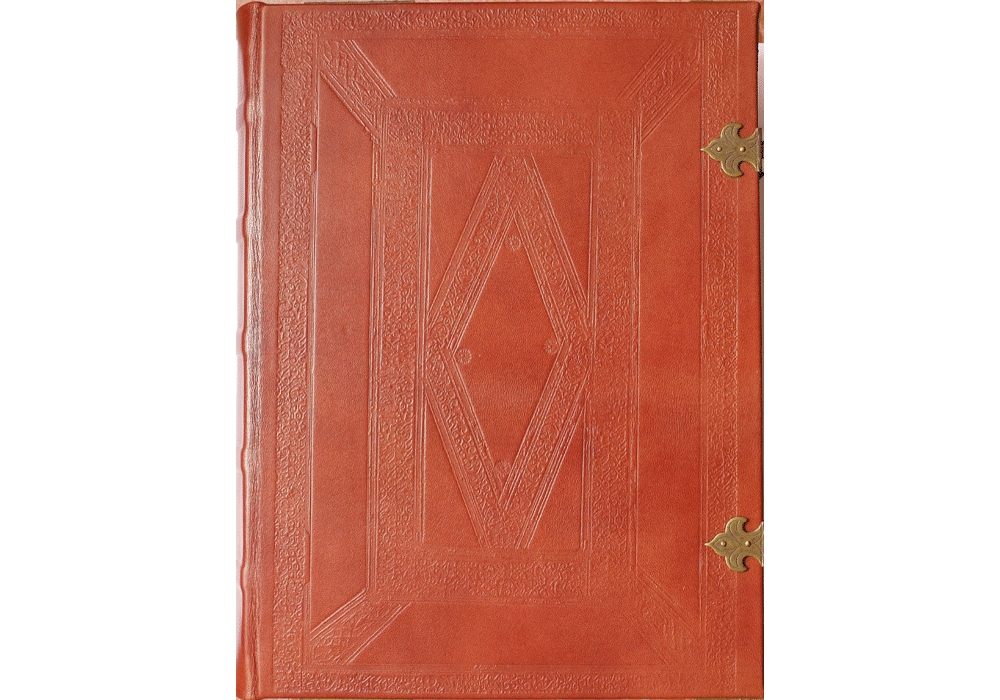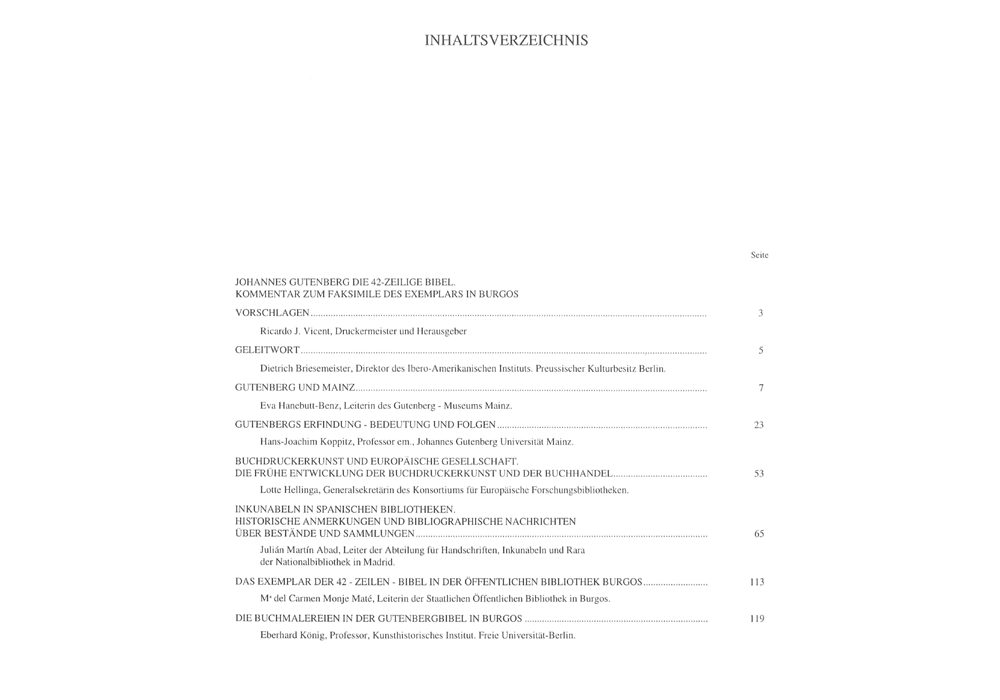|
|
|
| Seguir @vicentgarciaedi Twittear |
|
vgesa |

|
|
|
Synopsis: Gutenberg lived in a time of strong differences between guilds and patricians which disturbed the city’s peace. After completing his studies in the city of Erfurt he left the city of Mainz, spending some years in Strasbourg, an important commercial centre of the era, and an ideal place to start an activity and earn a living. In 1448 he returned to Mainz, and established a printing and composition house, which he made to work in the Getenberghof. In Mainz, as far as is known, the first dated books were printed. Printing began in 1452, and in October 1454, Eneas Silvio Piccolomini, -later pope Pius II-, sent word to the Spanish Cardinal Juan de Carvajal that the Imperial Assembly of Frankfurt was offering parts of a Bible done by a remarkable man. This was surely The Gutenberg Bible, since between 158 and 180 copies were being discussed, therefore it could only refer to printed books. Three years went by before this grandiose work was completed, demonstrating that it was in conditions to form a book with the same perfection as a medieval copier. In order to finance the printing, Gutenberg twice had to ask a Mainz merchant, Johannes Fust, for a loan of 800 florins. This was a very large amount, and as Gutenberg was unable to return the money in time, his printing machine fell into the hands of Fust, the moneylender, who along with his son-in-law Peter Schöffer, an old colleague of Gutenberg, established their own printing house which continued to exist through Schöffer’s heirs until well into the XVI century. In his final years Gutenberg bore witness to, not without tragedy, the fall in war of Mainz and along with that the beginnings of the spread of typographic art throughout Europe. From 1465 onwards he received an income from the archbishop Adolf of Nassau, the victor, which equalled a public homage. He died on the 3rd of February, 1468 in Mainz. The Gutenberg Bible had to differ as little as possible from the customary image of the codex, in such a way that the buyer would not find the work unusual. For this reason, the text may be inscribed within the tradition of manuscripts which were employed in the Mainz area. In order to get an adjustment of the text as balanced as possible and with aligned margins, Gutenberg commissioned 290 kinds of type for the Bible, which are admirable, above all those complicated unions between the type or ligatures. No subsequent print has ever surpassed this in typographic quality. In practically no invention, is such great perfection found from the very start. The buyers of a Gutenberg Bible did not receive identical copies, as the volumes were embellished each time in a different way. Given that each copy of the Bible is unique, it is without doubt a good time to produce a facsimile edition of the Burgos copy.
|
IBIC Rating: |
||
|
AC History of art / art & design styles |
1D Europe
|
|



















